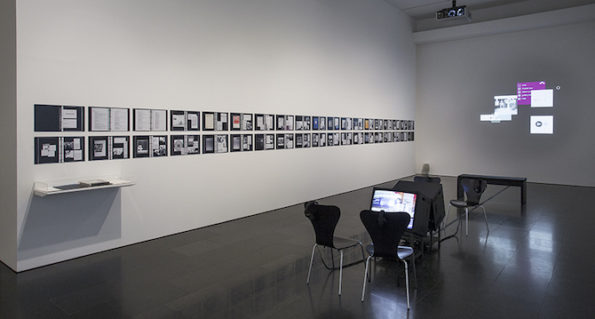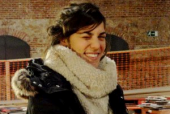Search
To search for an exact match, type the word or phrase you want in quotation marks.
A*DESK has been offering since 2002 contents about criticism and contemporary art. A*DESK has become consolidated thanks to all those who have believed in the project, all those who have followed us, debating, participating and collaborating. Many people have collaborated with A*DESK, and continue to do so. Their efforts, knowledge and belief in the project are what make it grow internationally. At A*DESK we have also generated work for over one hundred professionals in culture, from small collaborations with reviews and classes, to more prolonged and intense collaborations.
At A*DESK we believe in the need for free and universal access to culture and knowledge. We want to carry on being independent, remaining open to more ideas and opinions. If you believe in A*DESK, we need your backing to be able to continue. You can now participate in the project by supporting it. You can choose how much you want to contribute to the project.
You can decide how much you want to bring to the project.

It’s not fortuitous that work is one of the first things we ask about when we want to know something about someone. Ages ago, in the nineties, one of the star chat up lines was the mythical “are you studying or working?”. Later on, the idea of paid employment became a hysterical joke for the youth so it passed into the annals as a chat up line. Currently, multitasking has become de rigueur, most notoriously in fields such as the arts, where asking what you are working on is not unlike asking “what are you in now” without this “being in” something being total, and the “now” being inevitably finite. The manner in which we can concentrate on just one project or form of work also defines our luck in life: some, the chosen few, can do one thing after another, but the majority of us find ourselves thrown into maintaining various agendas, that advance in parallel, just to get to the end of the month.
Work is money, and latent money is also what we find in the monographic exhibition that MACBA has dedicated to one of the standard bearers of the art of institutional critique, Andrea Fraser. Money that moves the market, that feeds museums, conditions artists, excites galleries, belittles trainees, and that ultimately intervenes in each one of the (“social”) layers of the world of art which Fraser points to and appropriates in her ultra-theatrical performances.
From the incipient performances in which Fraser took on the figure of the museum guide and out of necessity based a self-referencing reflection onit, to the textual documentation she has generated throughout her career… l’1% c’est moi is an almost didactic exhibition. A pathway structured by subjects/sections (museums; globalization; isn’t it a lovely exhibition? Dismissed fantasies; the personal and the political: collected/archived) aims to show by areas, a work that in reality could be read linearly through a coherent trajectory, with few (if there are any) stridencies. The exhibition deals with the first references based on the institutional critique of the sixties up to economic, social and “globalist” critique, passing through those most linked to the subjectivity and inter-subjectivity of feminism. At all stages, Fraser feeds off critical theory to make it to her own territory, appropriating its content to realize her discourse and work. But what happens when criticism becomes a body to be criticised? Fraser appears and becomes complete in each one of her critiques, and if she already stated that “…We are the institution”[The exact quote is: “It’s not a question of being against the institution: We are the institution. It’s a question of what kind of institution we are, what kind of values we institutionalize, what forms of practice we reward, and what kinds of rewards we aspire to.”, in “From the Critique of Institutions to an Institution of Critique”, Artforum, September 2005], the doubt arises as to whether this is a strategy or symptom of the forms have ultimately usurped the aim.
Differences aside, perhaps due to the presence of the works as much as for the tone critical of the system, in this case in particular economics and labour within and beyond the art world, one also has the much more intimate work of Raquel Friera, that articulates a profound awareness of gender. A few months ago we saw, in ADN PlatformOne year women’s performance 2015-2016 (The clock piece), ), a project inspired in the performance One Year Performance 1980-1981 (The Clock piece) by Tehching Hsieh. In this work, Friera reflects upon unpaid work carried out by women on a domestic level. But under her belt she also has pieces such as La selva laboral, where she questions the poor working practices within and beyond the cultural ambit, or El Brillo del arte, about the invisibility of cleaning personnel, not just in the art world; Deudas sin intereses, where she reflects on the concept of debt; or L’art de vendre where she develops a simile between the commercial sales in a shop and those in the art world. These pieces, amongst others, form part of an artistic career that criticises the art-system as much as the global system.
There are many ways to relate to work and the institutions of labour and economics, many ways to “be” in something, on a level of institutional practices within the art system as much as from the point of view of involvement, protagonists, or intensity. The answer varies, if, like Fraser, we adopt the role of collector or artist. But still, there is never enough criticism directed at pinpointing bad practices, abusive situations, or pejorative contexts, be it from MACBA or a street in the Raval district. In the complex reality that accompanies and surrounds art, one mustn’t forget that art can be the channel, means and object with which to point to the socio-economic dis-functions of the world in which we live.

Marina spent the first two years of her life without saying anything: they told her parents that she was internalizing. And even though it’s a while now since she learnt to talk, she still needs to internalize. To then shake things up, question, order, disorder and celebrate. She finds politics in many places and has a special interest in all that’s subaltern, in the “commons”, and in the points where all this has an impact on creative expression.
"A desk is a dangerous place from which to watch the world" (John Le Carré)